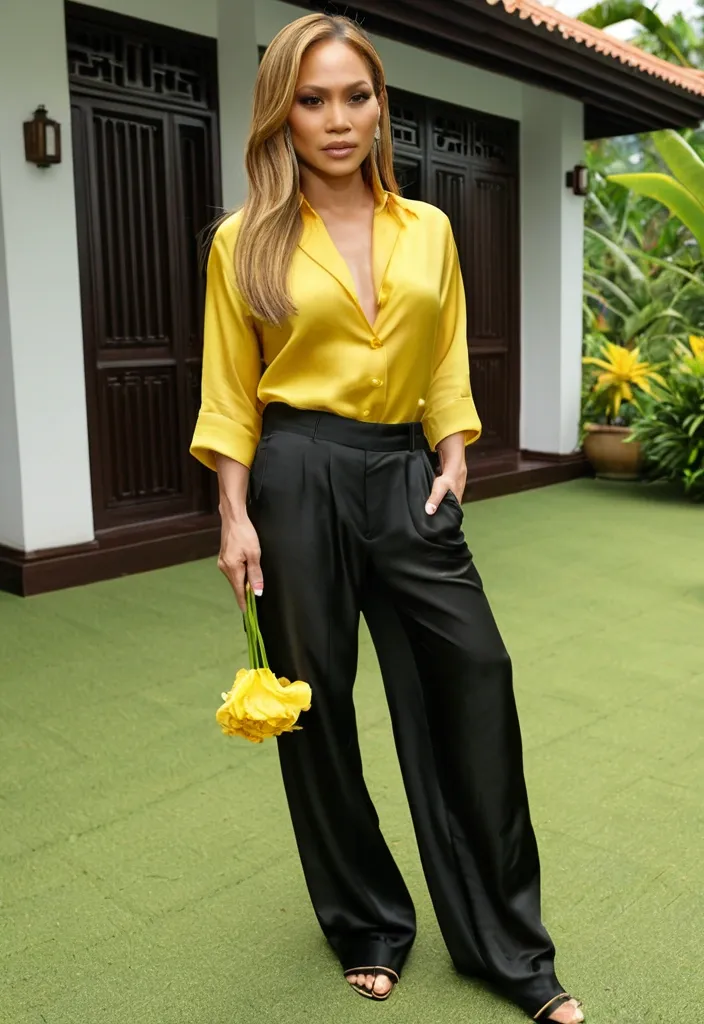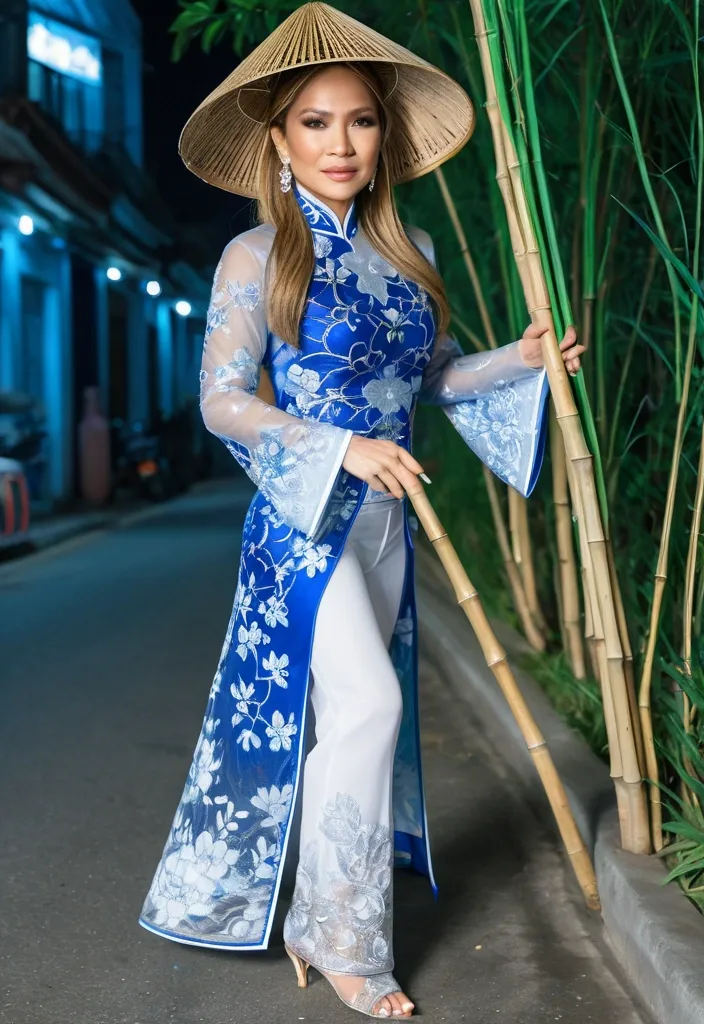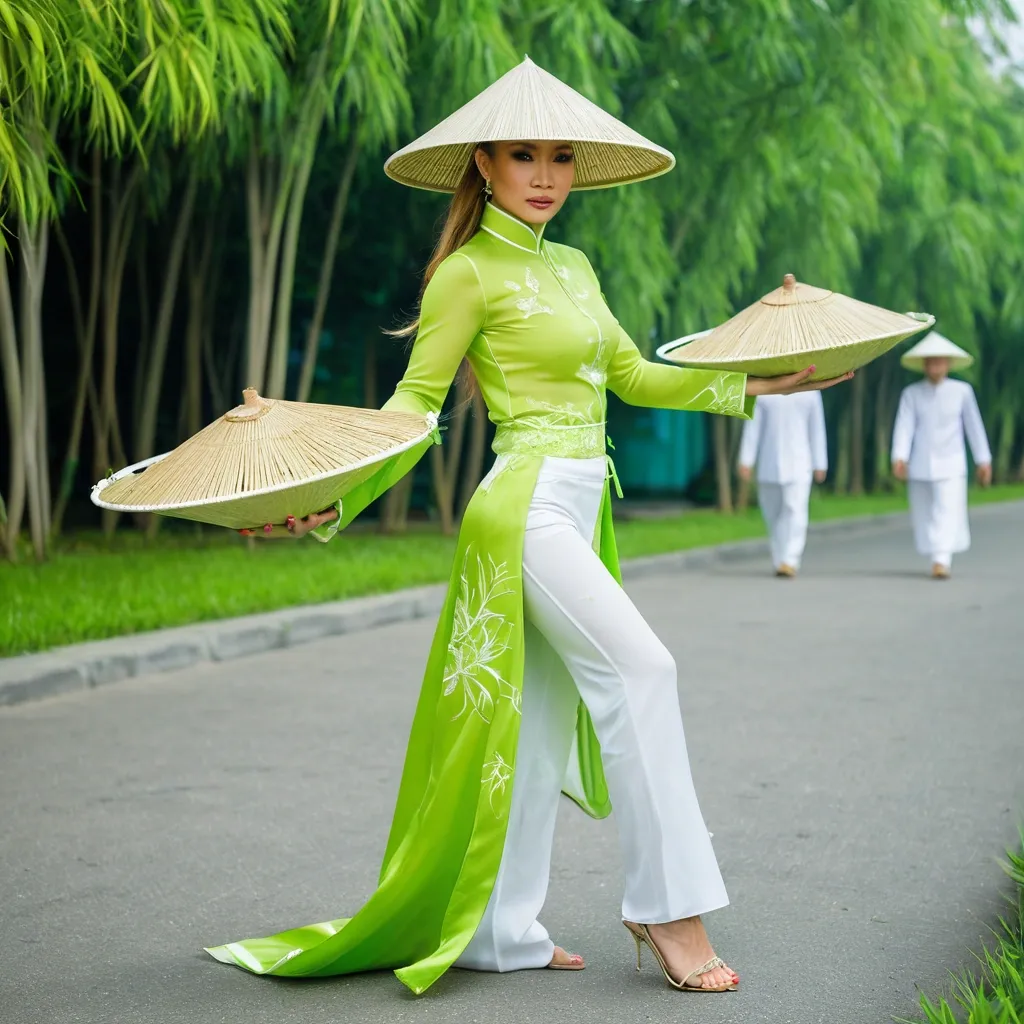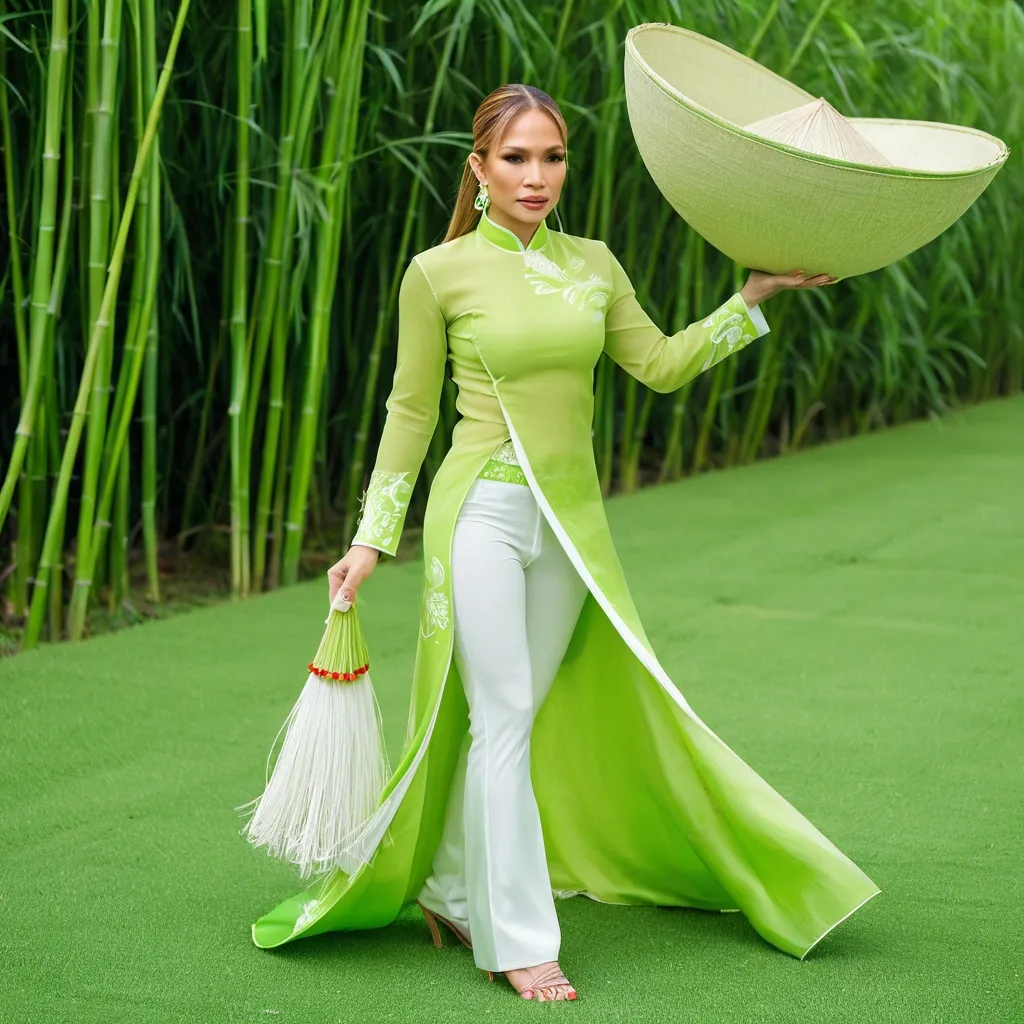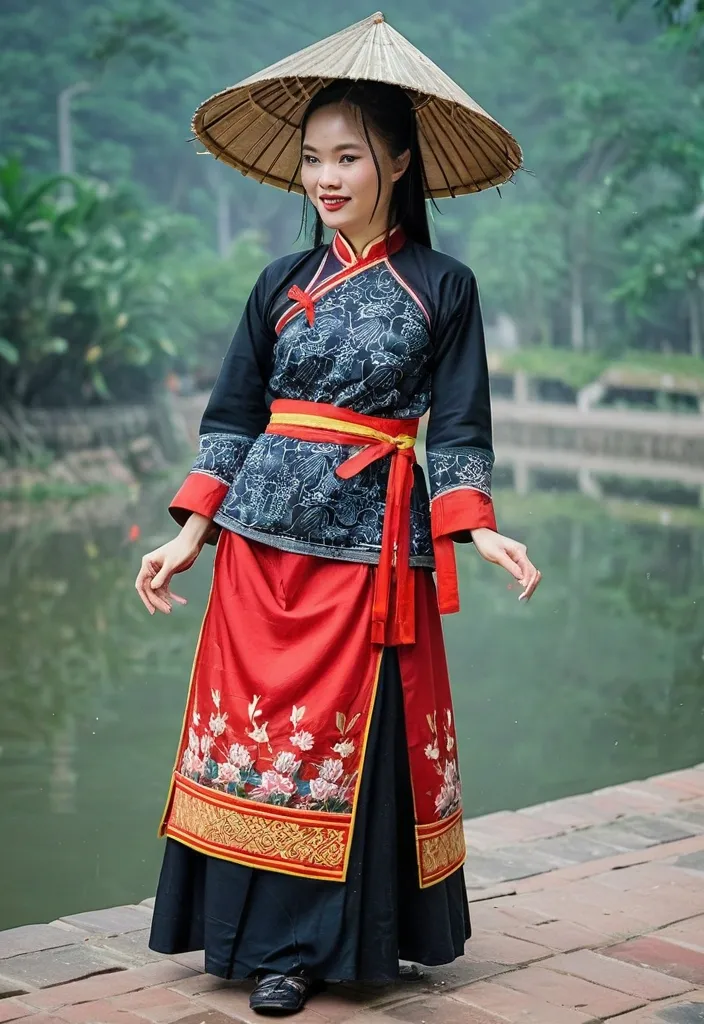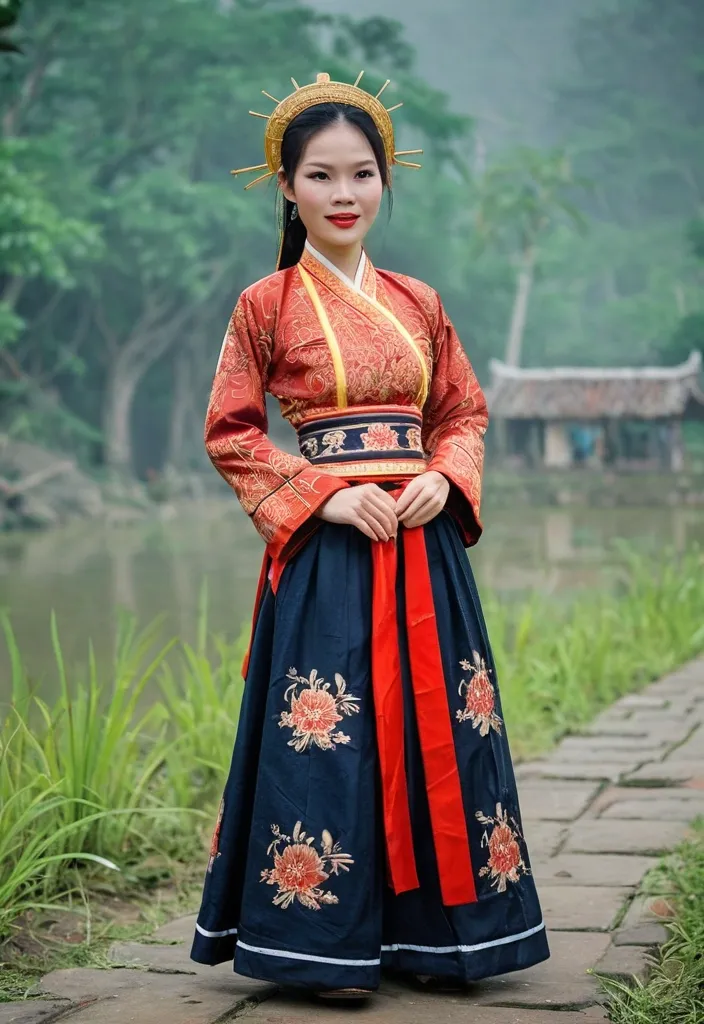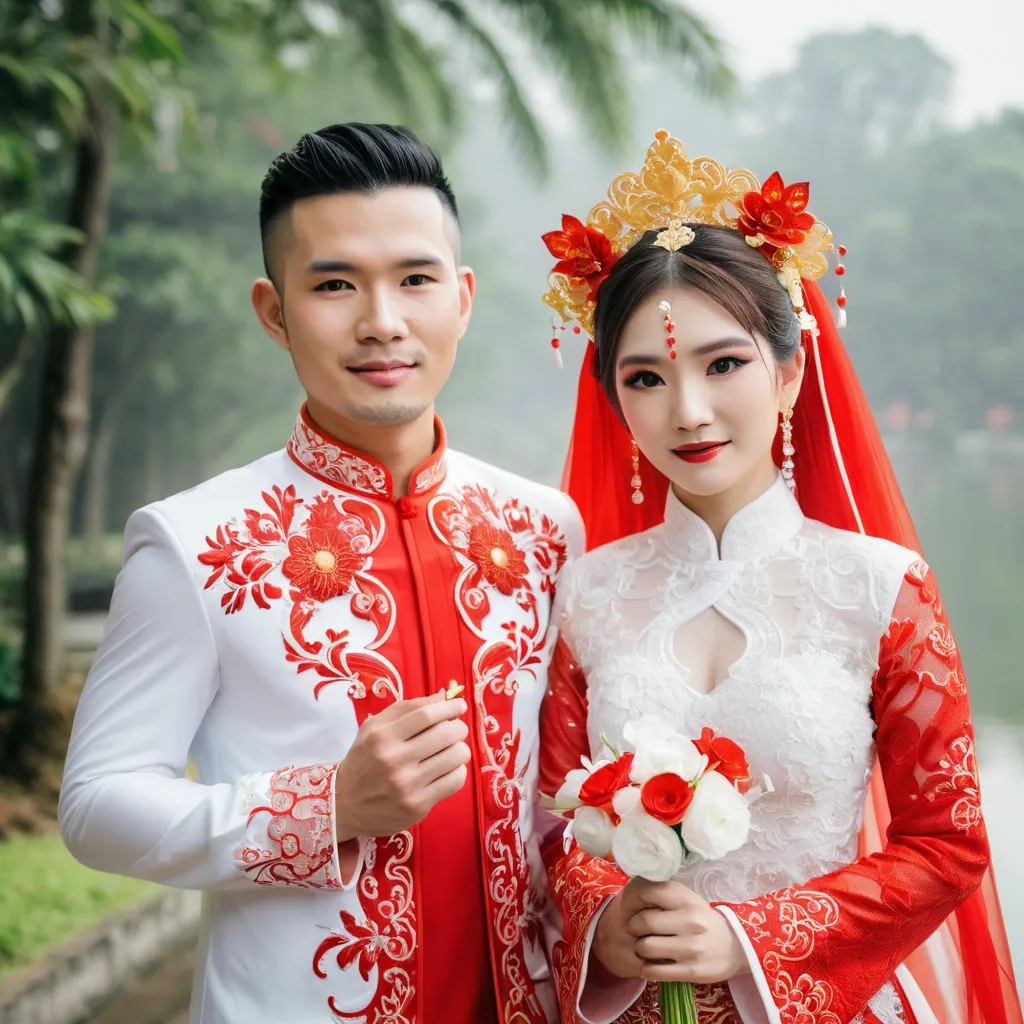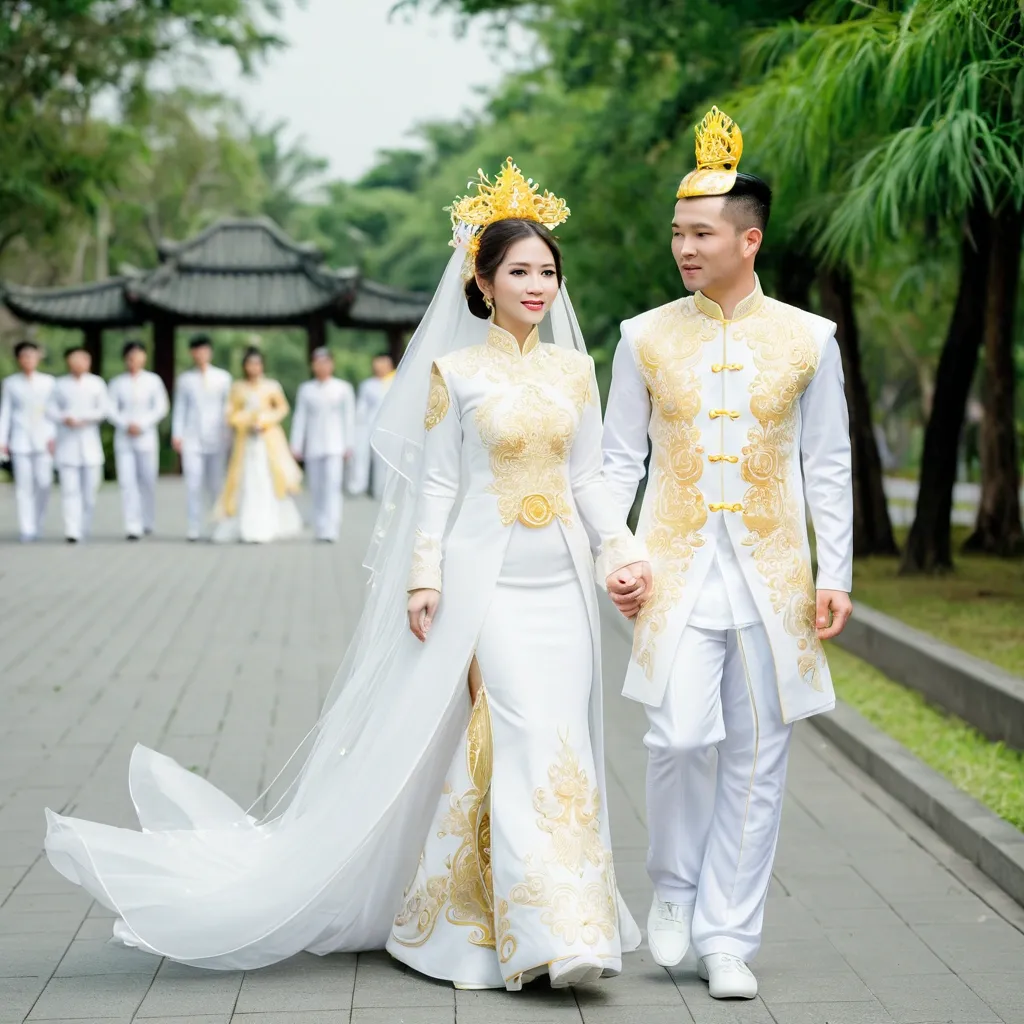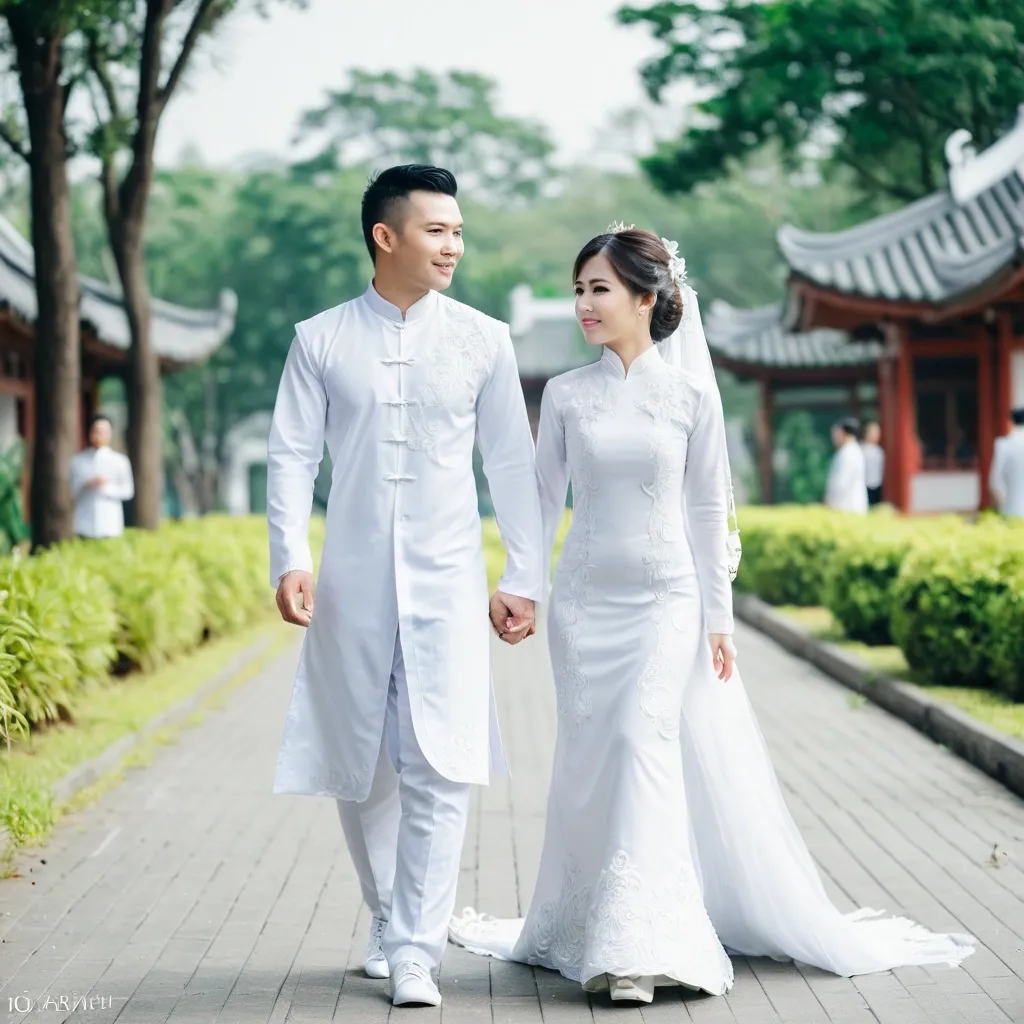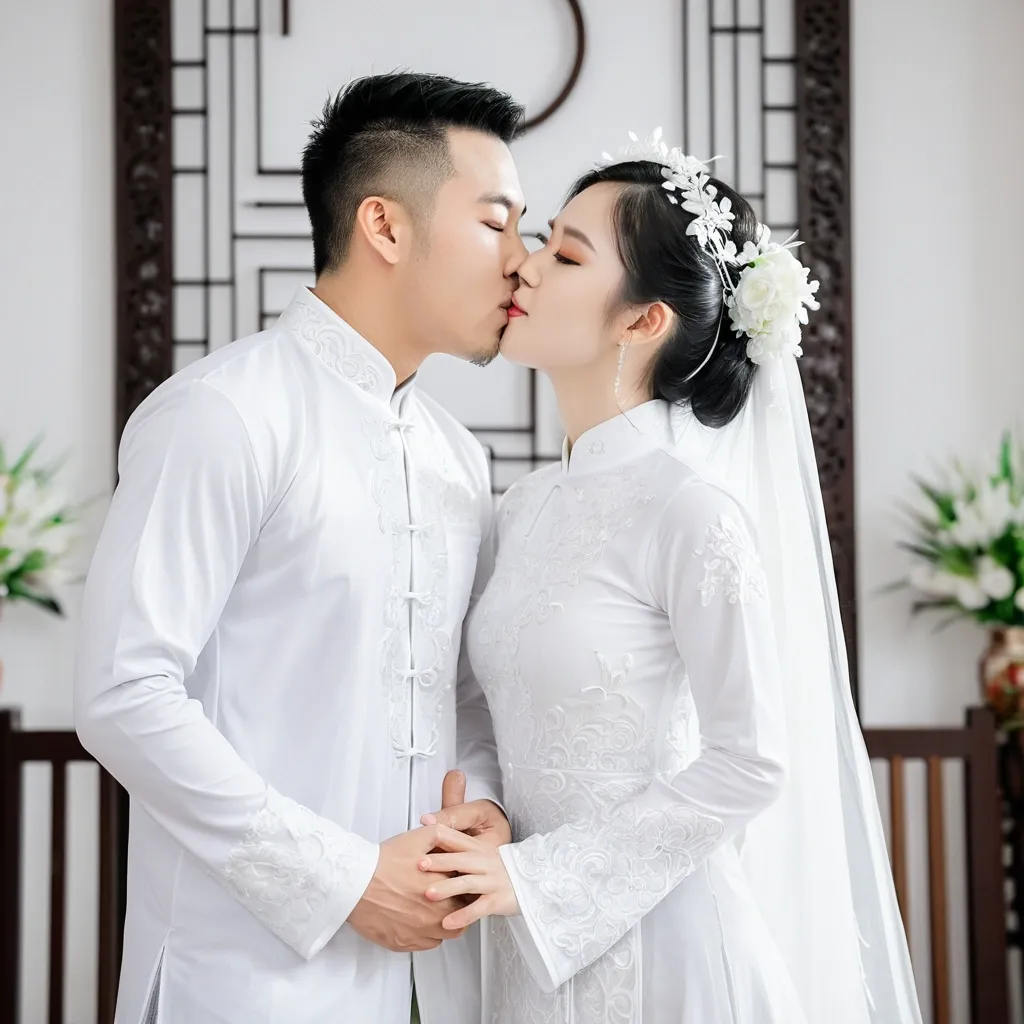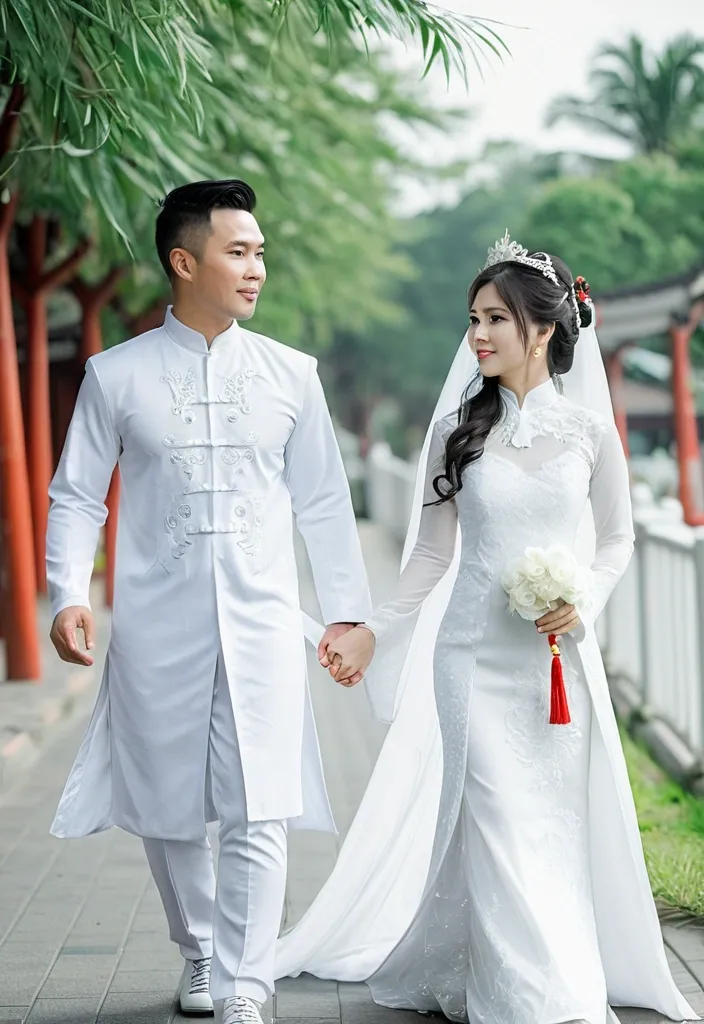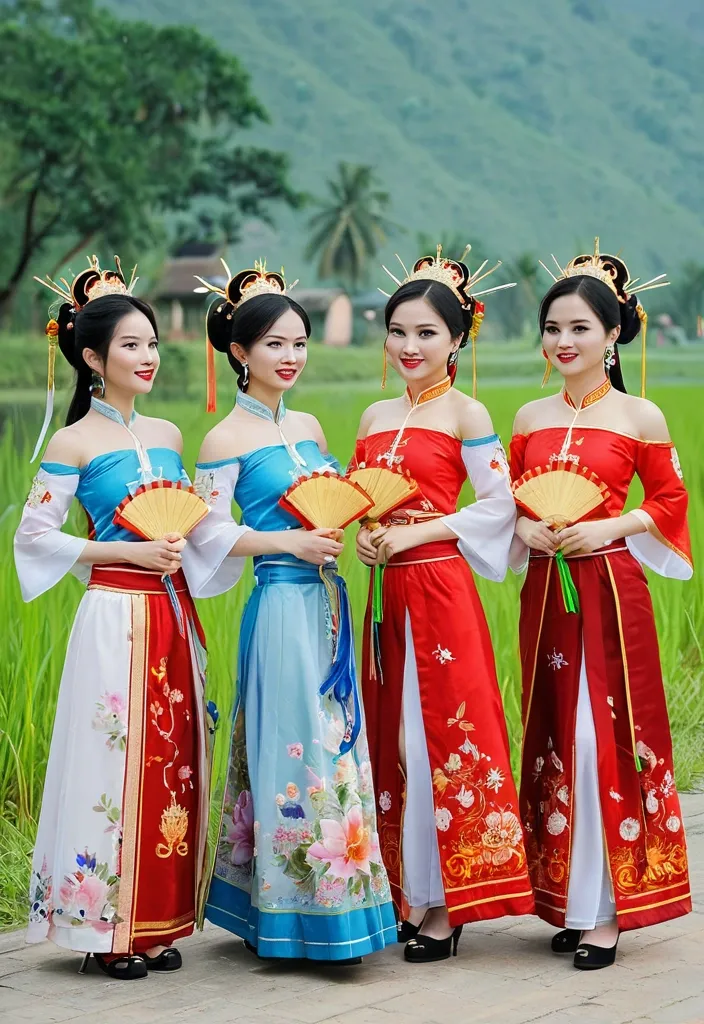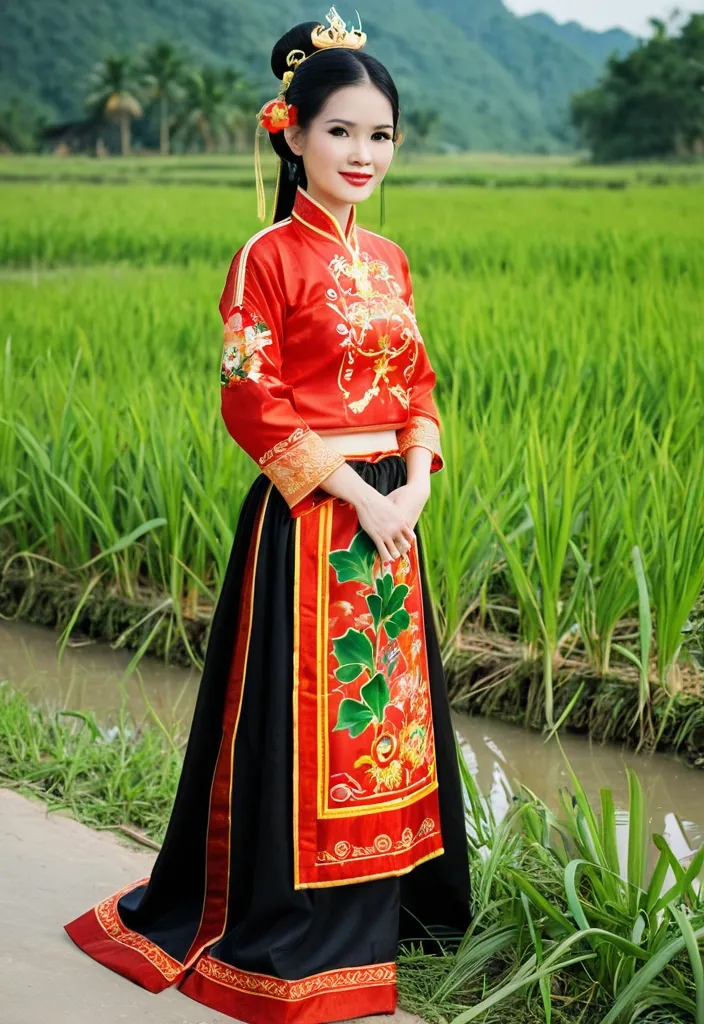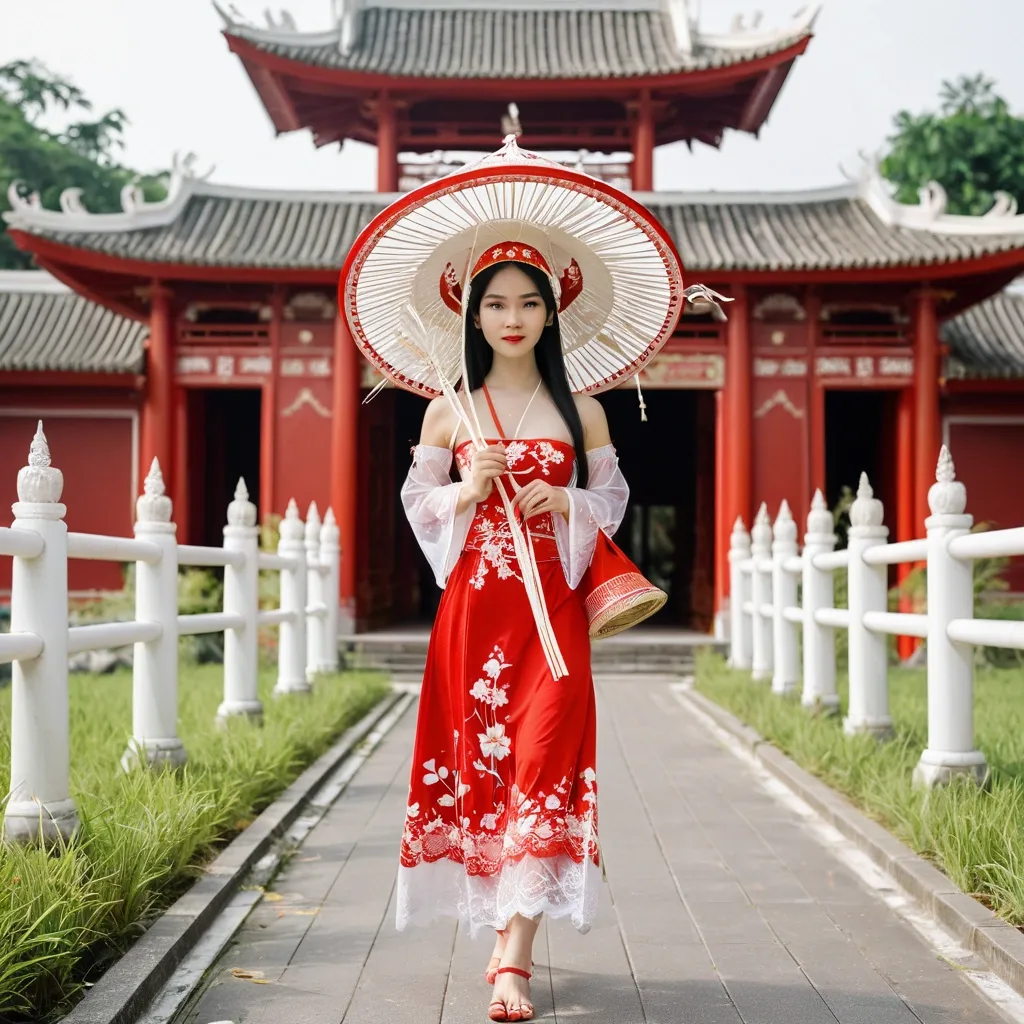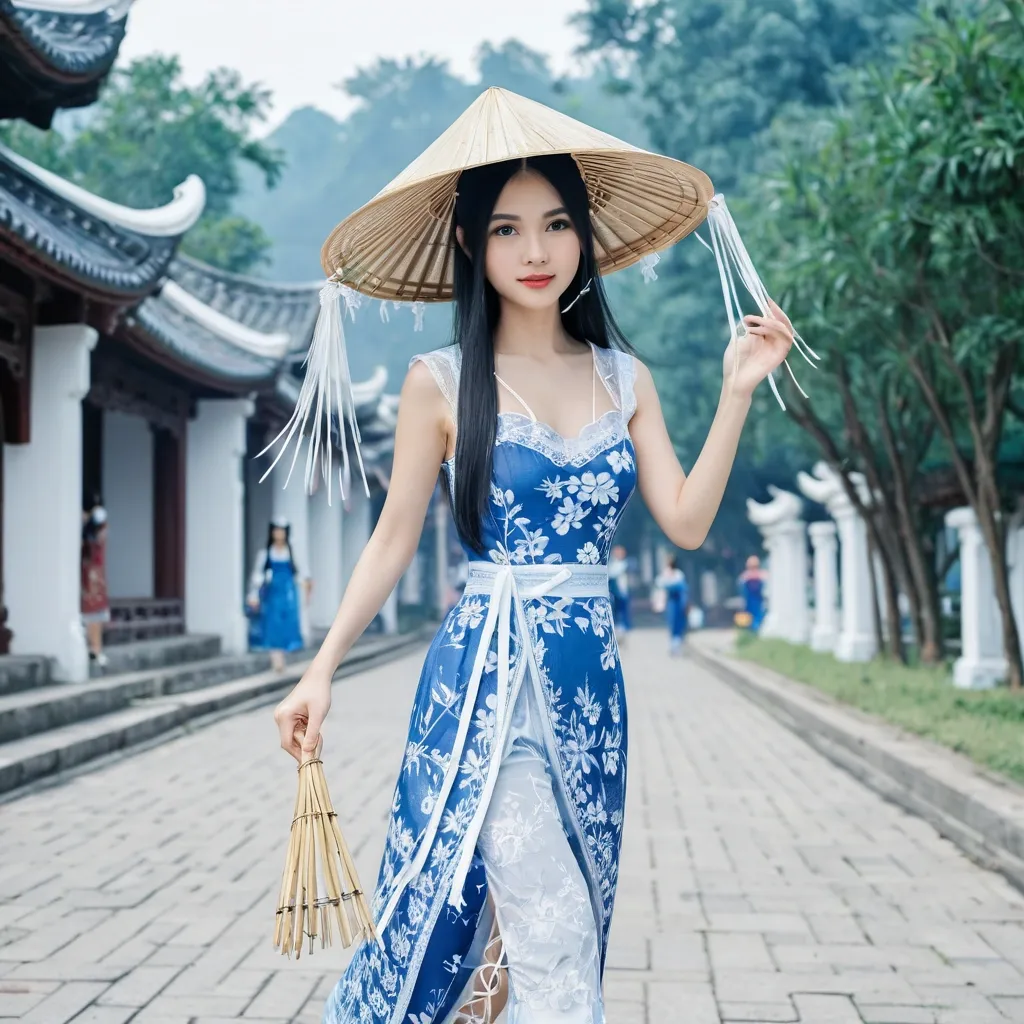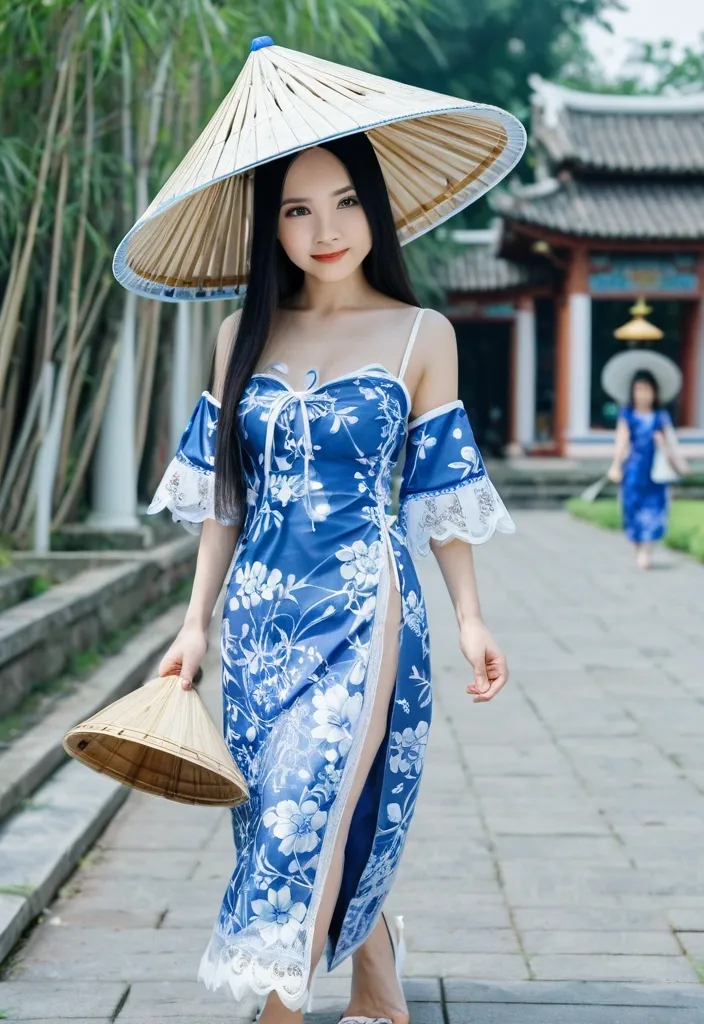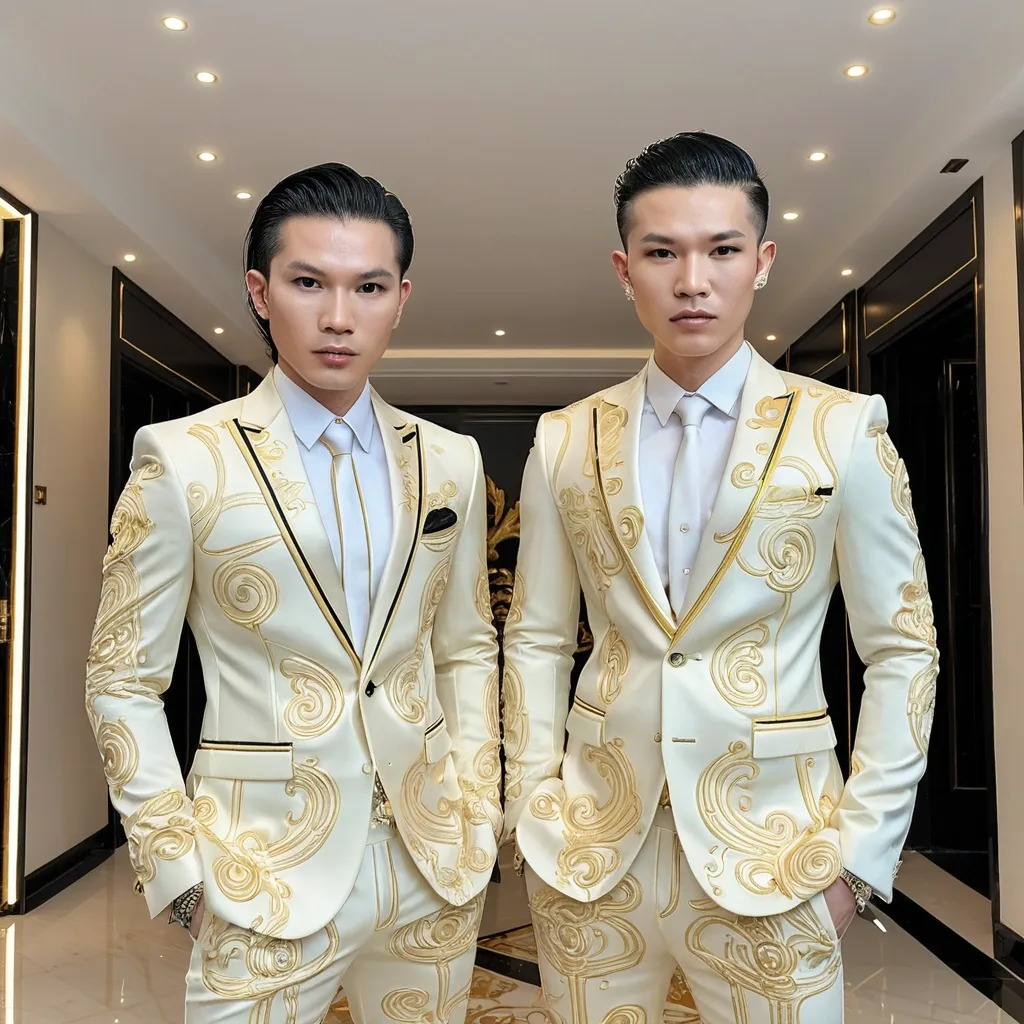Search Results for vietnamese
Explore AI generated designs, images, art and prompts by top community artists and designers.
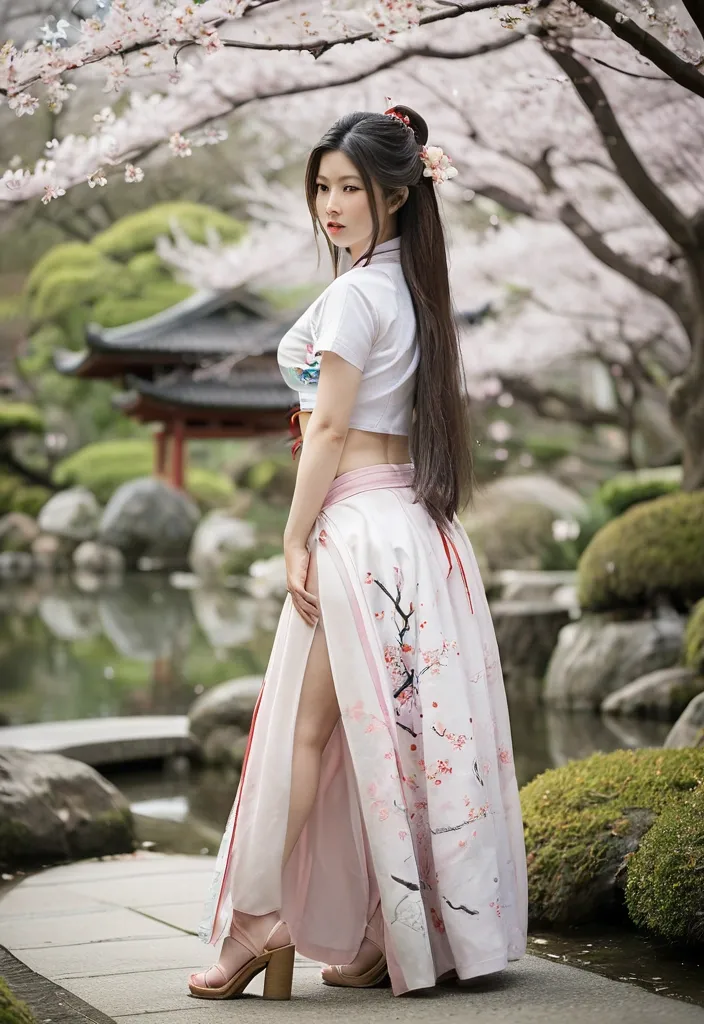
A whimsical Vietnameses woman with long billowing hair , dressed in an asian multi splited skirt and crop top , at the tranquil Japanese garden. Delicate cherry blossoms fall around her. woman with a healthy , well-proportioned figure , and white fair skin Style and Quality: Photorealistic , beautiful quality , full body shot , soft edges , focus on subject. ,
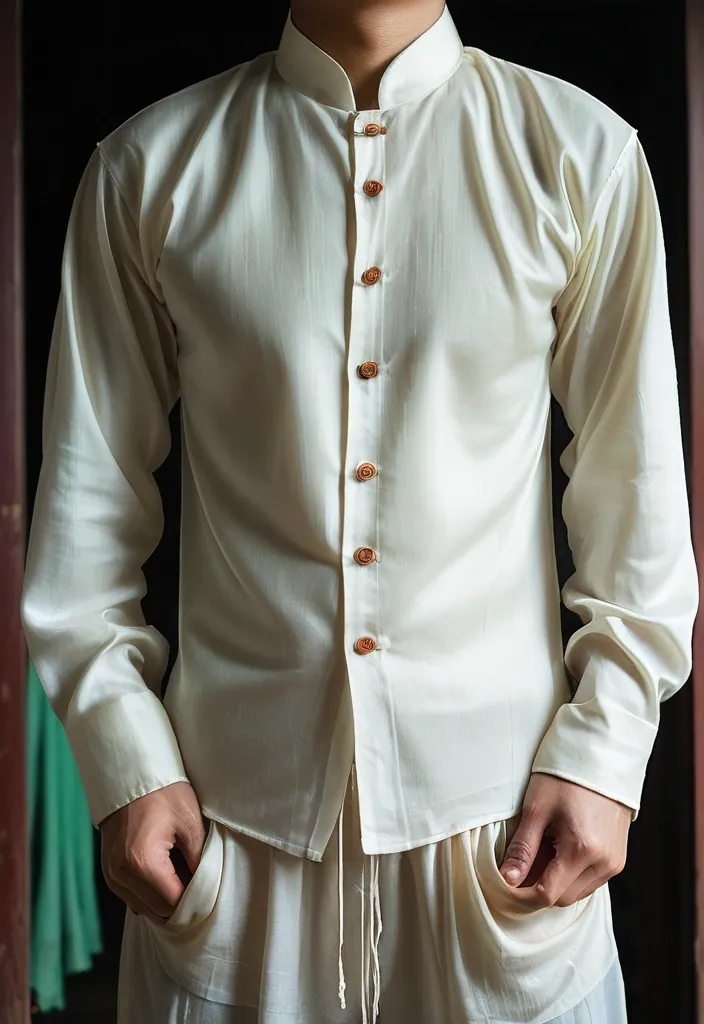
traditional southern Vietnamese garment. The top part that covers the torso is called the áo ("shirt" in English). It is mostly associated with rural southern Vietnam , especially in the Mekong Delta. Often worn as a top and bottom set , the áo bà ba is typically a long-sleeved , button-down silk shirt with a scooped neck , paired with silk pants. The shirt is long and split at the waist sides , forming two flaps , and customarily features two pockets. ,
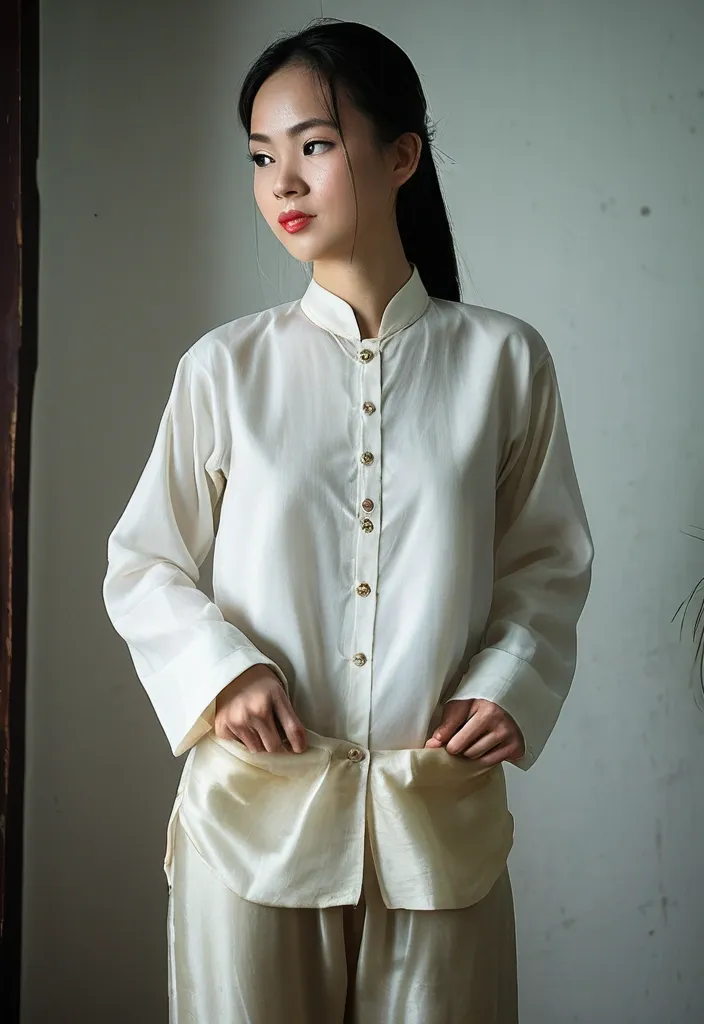
traditional southern Vietnamese garment. The top part that covers the torso is called the áo ("shirt" in English). It is mostly associated with rural southern Vietnam , especially in the Mekong Delta. Often worn as a top and bottom set , the áo bà ba is typically a long-sleeved , button-down silk shirt with a scooped neck , paired with silk pants. The shirt is long and split at the waist sides , forming two flaps , and customarily features two pockets. ,
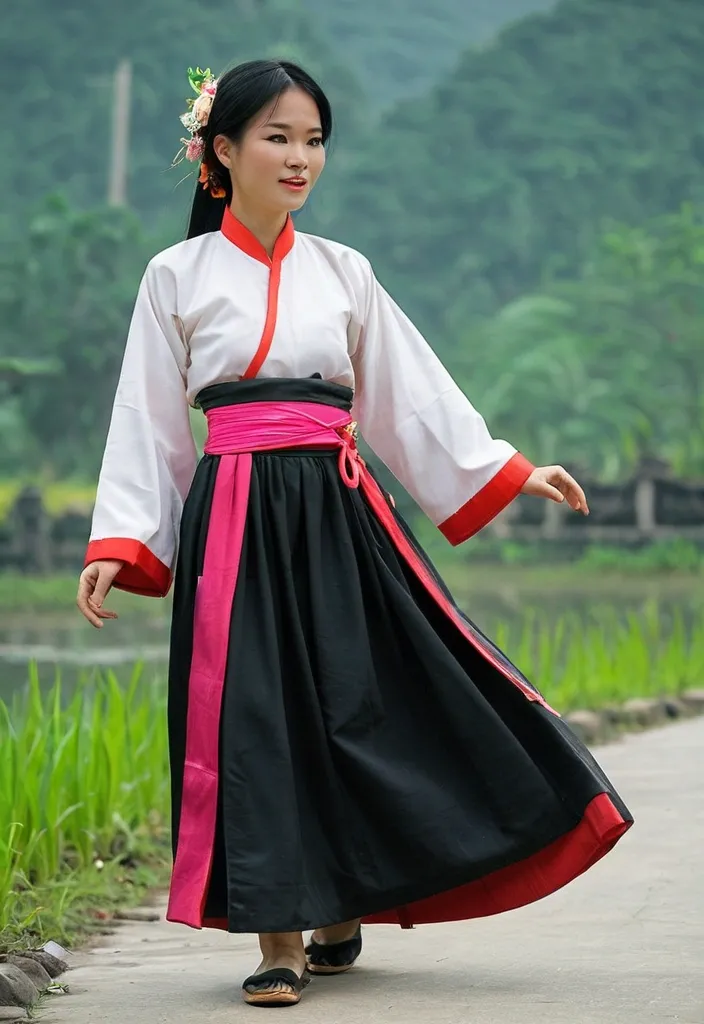
four-panel dress , is a traditional Vietnamese garment , particularly associated with the northern region. It's a flowing , tunic-like dress typically worn with a long skirt , an ancient bodice called yếm , and a sash. While no longer a common sight in daily life , it remains an important part of festivals and cultural events , especially in Northern Vietnam. Key Features and Components: Four Panels: The name "Áo Tứ Thân" literally translates to "four-paneled shirt , " referring to the two front and two back panels that make up the dress's tunic. Tunic: The tunic is typically made from plain , dark fabric (historically , for practicality) , but can also be found in brighter colors for special occasions. Skirt: A long skirt , often black , is worn underneath the tunic. Yếm: The yếm is a traditional bodice , often white or bright pink , worn as an undergarment. Sash: A silk sash is tied around the waist , over the tunic , and dangles down like ribbons. Cultural Significance: Northern Vietnam: The Áo Tứ Thân is most closely associated with the northern region of Vietnam , where it is still seen in festivals and traditional ceremonies. Rural Areas: It's more commonly worn in rural areas than in urban centers , where the simpler Áo Bà Ba is more prevalent. Special Occasions: The Áo Tứ Thân is often worn during festivals like the Lim Festival , which celebrates traditional folk songs. ,
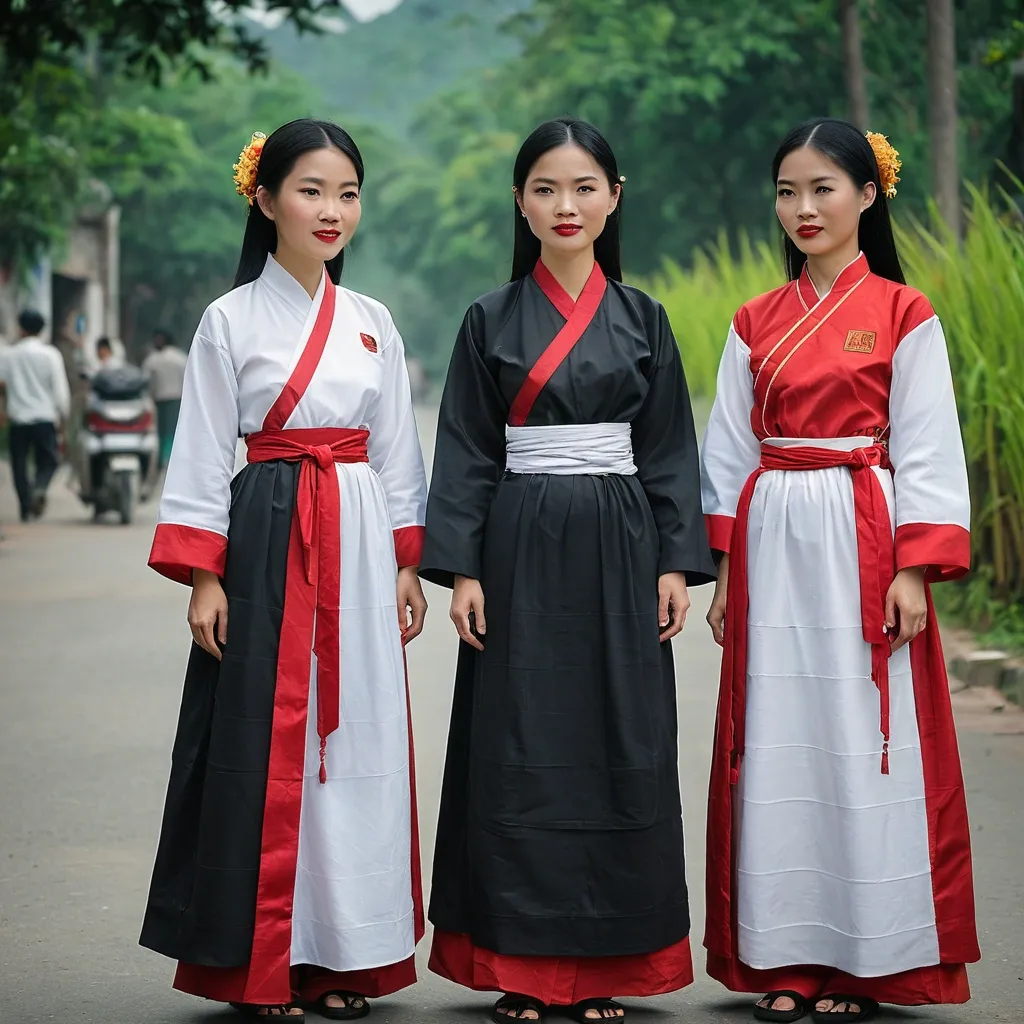
four-panel dress , is a traditional Vietnamese garment , particularly associated with the northern region. It's a flowing , tunic-like dress typically worn with a long skirt , an ancient bodice called yếm , and a sash. While no longer a common sight in daily life , it remains an important part of festivals and cultural events , especially in Northern Vietnam. Key Features and Components: Four Panels: The name "Áo Tứ Thân" literally translates to "four-paneled shirt , " referring to the two front and two back panels that make up the dress's tunic. Tunic: The tunic is typically made from plain , dark fabric (historically , for practicality) , but can also be found in brighter colors for special occasions. Skirt: A long skirt , often black , is worn underneath the tunic. Yếm: The yếm is a traditional bodice , often white or bright pink , worn as an undergarment. Sash: A silk sash is tied around the waist , over the tunic , and dangles down like ribbons. Cultural Significance: Northern Vietnam: The Áo Tứ Thân is most closely associated with the northern region of Vietnam , where it is still seen in festivals and traditional ceremonies. Rural Areas: It's more commonly worn in rural areas than in urban centers , where the simpler Áo Bà Ba is more prevalent. Special Occasions: The Áo Tứ Thân is often worn during festivals like the Lim Festival , which celebrates traditional folk songs. ,
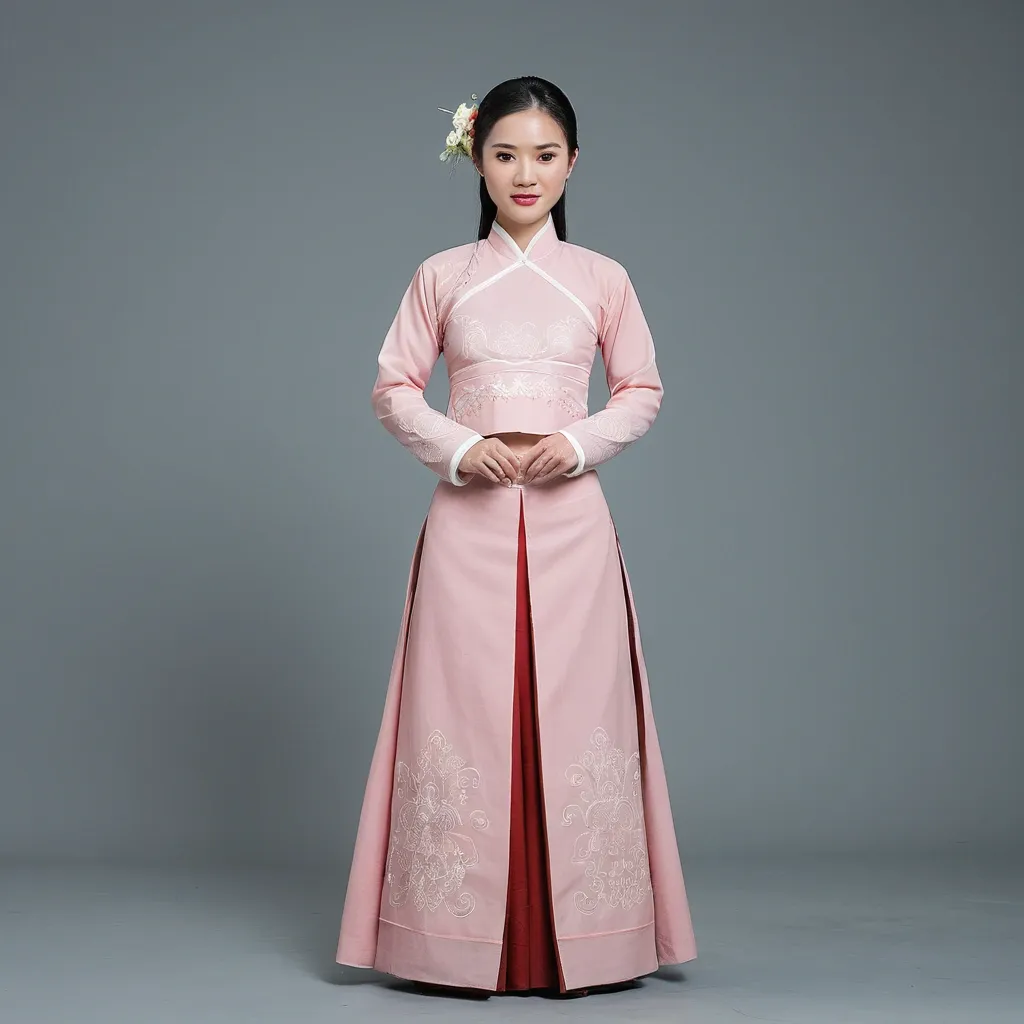
The Ao Tu Than is a traditional four-part Vietnamese dress , primarily worn by women in the northern region of Vietnam. It's considered one of Vietnam's enduring relics , predating the more widely known Ao Dai. The "four-part" refers to the tunic-jacket , which is open at the front and split into two flaps at the waist , combined with a full back flap. It's traditionally paired with a long skirt and a diamond-shaped bodice called a yếm , often worn in white , black , or bright pink ,
